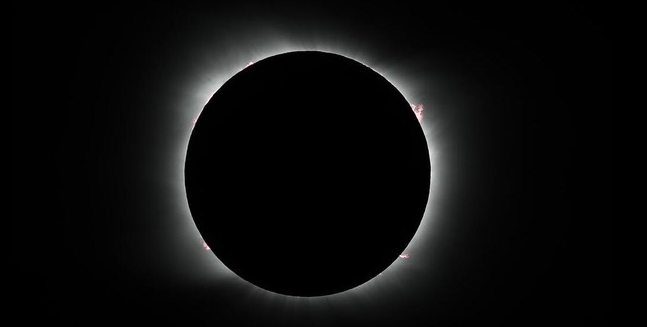ENTRE News – The Total Solar Eclipse (GMT) will take place April 8, 2024 in most of Mexico, Canada and the United States. What are the effects of an eclipse on Earth? A total solar eclipse is a phenomenon when the Sun’s rays are blocked by the Moon, the Moon’s shadow falls on Earth. The area of the Earth that is under the shadow of the Moon’s core (umbra) will experience a total solar eclipse.
The phenomenon last occurred in 2021, on the Antarctic continent. Meanwhile, in 2024, GMT will greet a number of regions in North America, especially Canada, the United States and Mexico on April 8 2024.
“The Total Solar Eclipse on Monday, April 8 2024 will cross North America, passing through Mexico, the United States and Canada. The Total Solar Eclipse will begin over the South Pacific Ocean. Weather permitting, the first location on the North American continent will experience the eclipse “The total sun is on the Pacific coast of Mexico at around 11.07 am,” NASA wrote on its official website.
This event triggered a number of phenomena on Earth. The surrounding environment will also change during the peak of this eclipse. The sun rises and sets in 360 degrees. When the Total Solar Eclipse process begins, there is another quite interesting sight, namely the phenomenon of the sun rising and setting in 360 degrees.
During this process, the colors of the sun rise and set around him from all directions. This 360-degree sunset effect is caused by sunlight in areas outside the path of totality and only lasts as long as the sun is completely blocked by the moon.
Stars and planets
A total solar eclipse will cause darkness and this will of course reveal the stars in the sky and several planets. During this eclipse, the planets Venus and Jupiter will be easily visible because they are in the same area of the sky as the sun on April 8.
The alignment of the sky will also reveal the corona FOR4D, the area of hot gas surrounding the Sun. Apart from that, there is also the possibility of seeing meteors streaking across the sky during the Total Solar Eclipse period.
Shadow ‘snake’
One of the rare phenomena that can be seen during a total solar eclipse is a shadow band.
“Shadow bands are thin, wavy lines alternating between light and dark that can be seen moving and wavy in parallel on plain-colored surfaces just before and after a total solar eclipse,” NASA said.
Some people also call it the shadow snake because its undulating movements can look like a snake slithering on the ground. This phenomenon does not occur with every eclipse, so there is no guarantee that observers will see it on April 8. If they do appear, they will only be visible in the moments before and immediately after totality.
The shadow bands are very faint and difficult for cameras to capture, so people who want to see them should place a white poster board or sheet on the ground at their viewing location. These shadow bands may even appear on snow-covered ground if cold weather occurs along the path of totality in the days leading up to the eclipse.
Temperature drop
The eclipse will not only cause the environment to look different, but it will also feel different.
“When the sun’s light fades at dusk, we always notice how things start to cool down. The same goes for the temporary dimming during a total solar eclipse,” explains NASA.
Depending on a number of factors, such as the time of year, cloud cover and the length of totality, the air temperature can drop by more than 20 degrees F. During a solar eclipse in 1834, the air temperature in Gettysburg, Pennsylvania reportedly dropped 28 degrees Fahrenheit.
Astronomers don’t expect temperatures in April to drop as much as during the 2017 eclipse, but people can still feel the temperature drop during and immediately after the celestial alignment.
Animal behavior
Sudden darkness in the middle of the day can play tricks on animals, and depends on the type of creatures and what creatures are around during the eclipse.
In a study conducted after the 2017 Great American Eclipse, researchers at Cornell University and the University of Oxford Situs Toto found that “birds became confused” in the moments before totality due to changes in sunlight.
Chickens may think the eclipse is the sudden onset of night and look for places to roost, followed by dawn, which may spur them to search for food, as most chickens eat in the morning.
